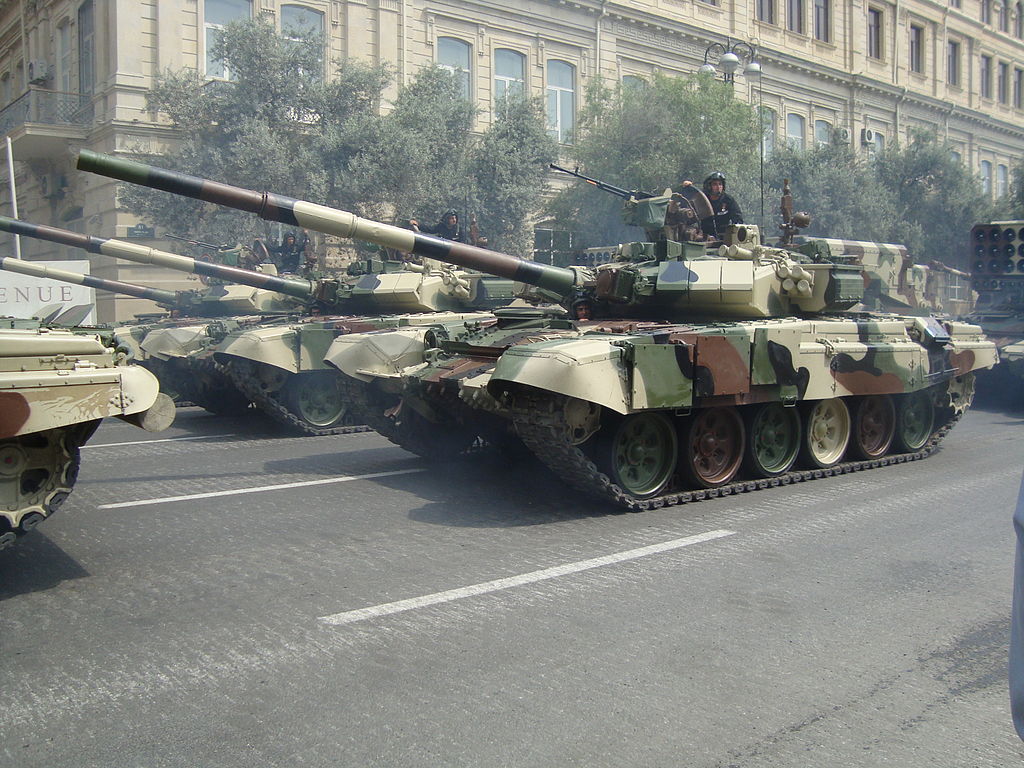One Azeri, five Armenian soldiers reported killed in new clashes between two South Caucasus countries

The Ministry of Defense of Azerbaijan reported on Saturday that one of its soldiers was killed in renewed clashes on the line of contact between Azerbaijani and Armenian forces in Nagorno Karabakh region of Azerbaijan.
The Azeri officials also stated that at least five Armenian soldiers were killed in a response to Armenian attack. Tensions grew this week with both Armenian and Azerbaijani media reporting ceasefire violations on the line of contact, as OSCE Minsk Group co-chairs announced the leaders of Armenia and Azerbaijan would meet soon to continue peace talks.
The Azerbaijani side stated earlier in the day that Armenian units fired at Azeri forces in Goranboy, Terter, Aghdam, Fizuli and Gedebey districts of Azerbaijan. Armenian Defense Ministry, in turn, accused the Azeri side of ceasefire violations and claimed that Armenian forces killed an Azeri soldier but sustained no casualties themselves.
All districts except for Gedebey are located on the line of contact in occupied region of Nagorno Karabakh. Parts if Terter, Aghdam and Fizuli have been under control of Armenian forces since 1993. The ceasefire agreement between Armenian and Azeri forces was signed in May 1994. Gedebey district is located in the northwestern part of Azerbaijan and shares an international border with Armenia. Skirmishes across the international border are not new but active engagements may spark a new phase of the conflict.
Armenia is a member of the Collective Security Treaty Organization (CSTO) led by Moscow, an organization considered a response by Kremlin to NATO enlargement in Eastern Europe. According to the Azeri side and human rights organizations which had studied the conflict in 1990s, Armenia’s advance deep into Azerbaijan’s region throughout 1993 when it made major territorial conquests was realized with strong backing of the Russian forces. Armenia’s security and lasting presence of its troops in Nagorno Karabakh relies on its membership in CSTO. Somewhat like the Article 5 of NATO Charter, CSTO’s provisions oblige Russia and other members to come to Armenia’s help should it be attacked by Azerbaijan. Although CSTO’s mandate does not extend into occupied Nagorno Karabakh, an area still considered an internationally recognized Azerbaijani territory, Armenia hopes an open conflict with Azerbaijan away from the line of contact in Karabakh and across the international border, will draw Russia to aid its Armenian ally.
After the Russo-Georgian war of 2008 when Russian forces came to the aid of separatists in South Ossetia and invaded Georgia proper, Azerbaijan had played a careful game not to trigger an unwelcome response from Russia. Baku, rich with revenues from oil and gas sales, had beefed up its military potential and enlarged its domestic military production in the last decade. It buys sophisticated weaponry from Russia, Israel, South Africa, Turkey, Pakistan and China, while Armenia mainly relies on arms purchases from Russia on discounted prices. In the beginning of the month, Moscow extended a $200-million loan agreement to Yerevan which Armenian parliament readily ratified. As part of the agreement, Armenia will pay off the loan within 13 years and will use the money for purchases of short-range ballistic missile systems Iskander-M and other sophisticated weaponry produced by Russia.
Serious escalation on the frontline took place a year ago when Armenia and Azerbaijan came close to a new war. The tensions subsided after calls for peace by the Russian President Vladimir Putin who held trilateral talks with President Aliyev and President Sargsyan in Russia’s Sochi resort town. A few months later Azeri forces shot down one of the two Armenian military helicopters flying in Azerbaijani airspace and reportedly firing at Azeri forces.
Azerbaijan’s Nagorno Karabakh region and surrounding 7 districts have been under military control of Armenian forces since early 1990s. The territory which was gained with backing of Armenia and reportedly with support from Russian troops, has since run its own affairs, but has not been recognized by any country or international organization as an independent state. Azerbaijan maintains Armenia annexed the region by force and was looking to enlarge its territory at the expense of Azerbaijani territories.
OSCE’s Minsk Group was tasked to undertake a hard mission of bringing peaceful solution to the conflict since 1992. Despite the efforts of three co-chairs of the group (U.S., Russia and France), no proposal has so far been accepter by both parties. Baku which now spends more than $5 billion per year (as per 2015 budget) on its military, vows to retake the region by force, should all the peace efforts fail.




